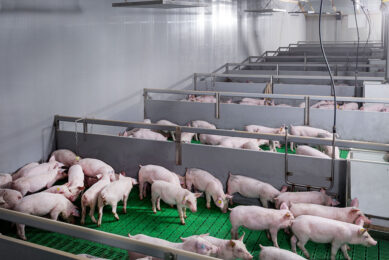Humic substances can contribute to mortality reduction

A report released in May 2022 from MetaFarms (supported by the US pork industry’s Pork Checkoff system) focused on US pig productivity from 2017-2021, shows some disturbing mortality trends across all production phases, but new research into humic substances may provide part of the solution to this difficult problem.
Metafarms found that average finishing pig mortality in the study’s 19 million finishing pigs is 5.2% in 2022. This was 4.6% in 2012. The causes could be related to less individual pig attention due to lack of pig farm labour and many other factors, including overall farm management differences. However, humic substances are showing strong potential to contribute to reducing mortality.
Humic acid definition
According to the International Humic Substances Society, humic substances “are complex and heterogeneous mixtures of poly-dispersed materials formed in soils, sediments, and natural waters by biochemical and chemical reactions during the decay and transformation of plant and microbial remains (a process called humification).
Plant lignin and its transformation products, polysaccharides, melanin, cutin, proteins, lipids, nucleic acids, fine char particles, etc., are important components taking part in this process. Humic substances are involved in many processes in soils and natural waters. Accordingly, humic substances have received attention from scientists in a wide variety of disciplines.”
Latest research on humic substances effects
In a chapter in a new 2022 book entitled ‘Humus and Humic Substances – Recent Advances,’ María de Lourdes Angeles, Sergio Gómez-Rosales and Guillermo Téllez-Isaias focus on the latest research on humic substance effects as a feed additive for pigs, poultry, dairy cows and other livestock animals. In a review of the literature, they found that HS have a protective action on the digestive mucosa. Indeed, humic substances have anti-oxidant properties, immunomodulatory and anti-inflammatory attributes, antiparasitic and antifungal effects, and boosted utilisation efficiency of minerals, proteins and lipids utilisation within the body.
The authors state that these effects stems from the fact that humic substances promote “the development of probiotic microbiota and positive changes in bacterial fermentation patterns, which results in improved intestinal health and integrity… However, the molecular mechanisms of action of HS in the intestine and throughout the body remain unknown.”
New and previous studies
In November, Kent Nutrition Group released results of a study into feeding humic substances to pigs and poultry. Dr Tom Weber and Dr Michael Edmonds acknowledge that feeding an HS to provide bioactive components such as humic and fulvic acids does not likely address pathogen loads directly, feeding a humic substances may help support animal defense mechanisms by reducing free radicals associated with oxidative stress.
They add in a new article that “additionally, increased levels of endogenous antioxidants and maintaining more of a homeostatic state during periods of stress can potentially make animals more resilient in the face of environmental and other challenges encountered during the finishing grow-out period.”
Increased levels of serum glutathione
Previous research by Dr Weber observed that pigs fed a HS had increased levels of serum glutathione, an important endogenous anti-oxidant, findings that align with data from more recent published research studies conducted in laying hens and rodents.
Greater serum glucose levels
Additionally, Dr Weber found that pigs fed a HS maintained greater serum glucose levels when subjected to inflammatory challenge (from an E. coli lipopolysaccharide injection), and the same thing could likely be expected when to better cope with challenging scenarios. Also, when the humic substance was fed with butyric acid, pigs’ level of serum cortisol stress hormone substantially decreased with the same inflammatory challenge.
New studies
In 11 finishing pig studies that Kent Nutrition Group has completed over the last few years, Weber, Edmonds and their colleagues found that feeding a high-quality humic substance, on average, improves livability by approximately 0.7%. The improved livability benefit with feeding humic substances “estimated at US$ 1.50 per pig placed for each 1.0% decrease in mortality, demonstrates an almost certain return on investment.”
Dr Weber and Dr Edmonds recommend feeding a humic substance to finishing pigs. They state that “through its indirect effects on antioxidant systems and other protective mechanisms, humic substances enable finishing pigs to better thrive during the grow-out cycle.”
Humic acid and blueberry leaf
In another recent study, Korean researchers fed humic acid and blueberry leaf powder as a feed additive to finishing pigs. They found humic acid supplementation had beneficial effects in lipid profiles without altering feed efficiency rate. In terms of meat quality, humic acid and blueberry leaf powder co-supplementation in pig feed decreased pH in the longissimus thoracis, and sensory characteristics were enhanced without causing adverse effects in meat quality.
“Taken together,” they stated, “addition of humic acid and blueberry leaf powder in pig feed may produce functional meat products.”
 Beheer
Beheer








 WP Admin
WP Admin  Bewerk bericht
Bewerk bericht